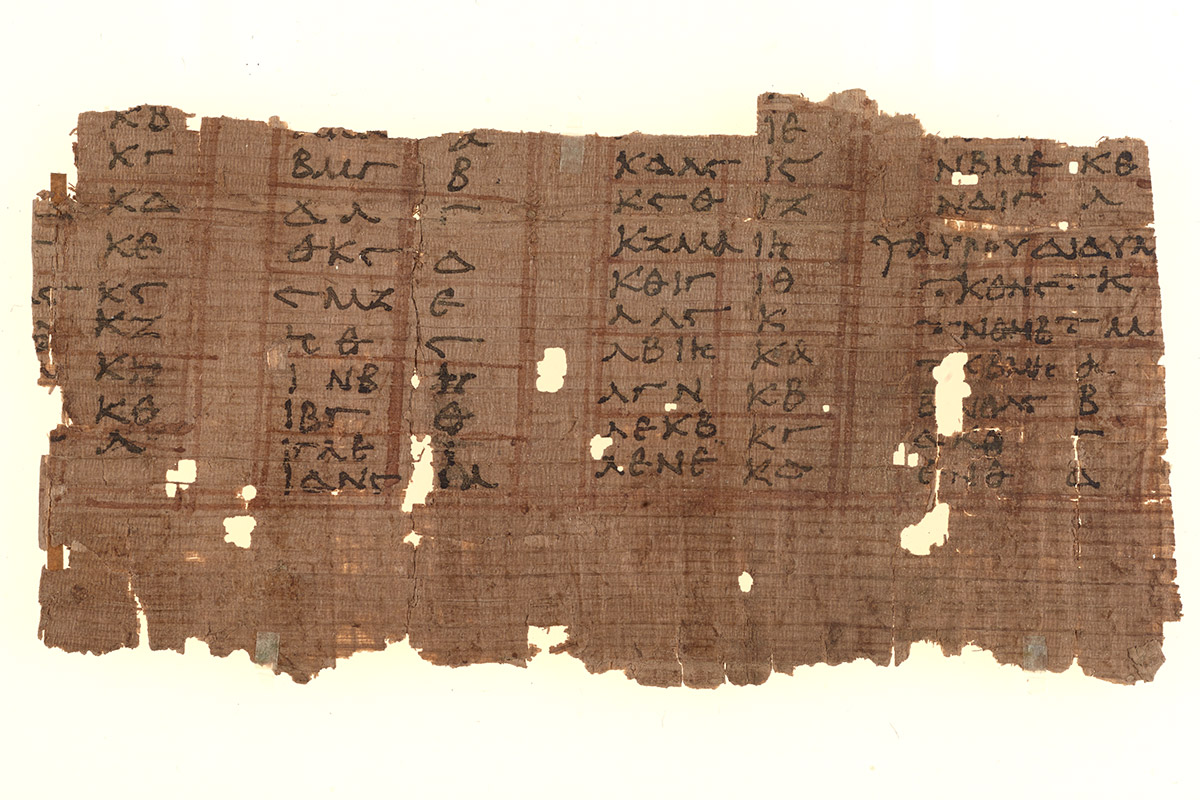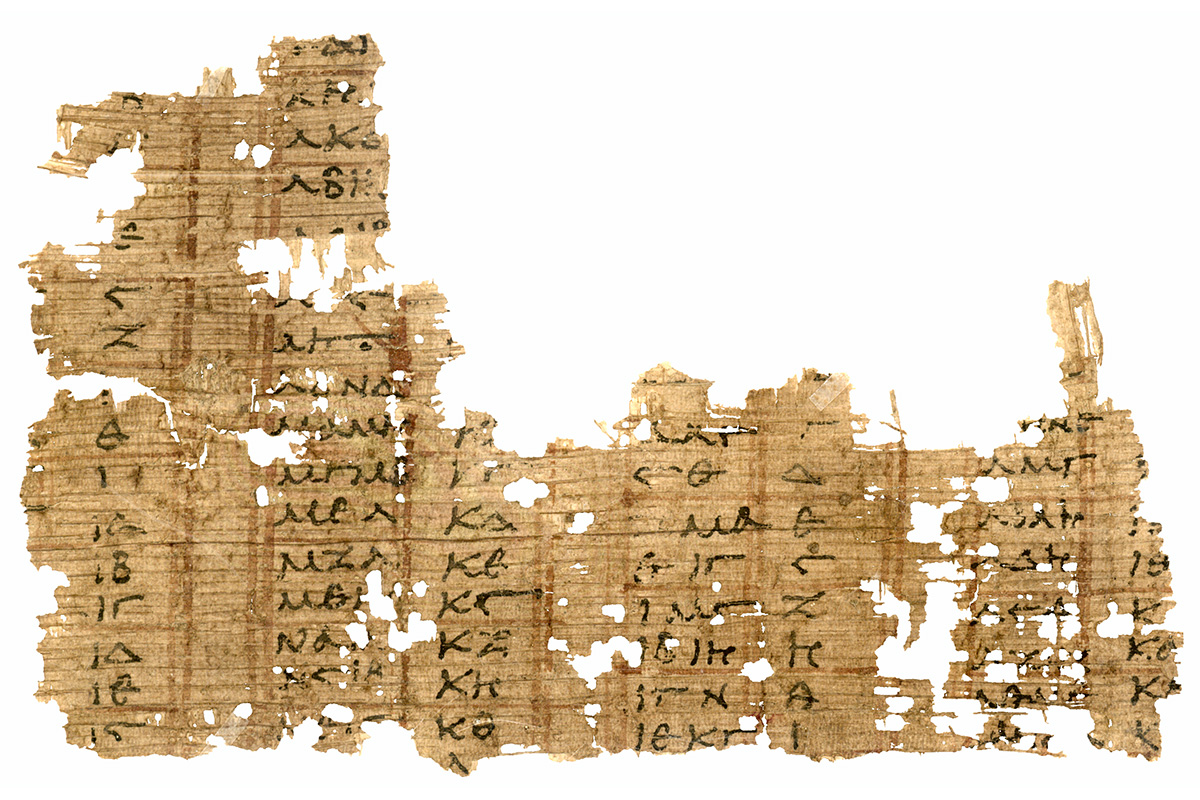The Planets’ Motions: The Great Problem of Greek Astronomers

- Astronomical table for the calculation of the longitudes of the planet Mars.
- P. Mich. III 151 = P. Mich. inv. 924, University of Michigan Library, Papyrology Collection.

- Astronomical table for the calculation of the longitudes of the planet Mars.
- P.Heid. Inv. G 4144. Photo: Elke Fuchs © Institut für Papyrologie Heidelberg.
This papyrus fragment (see the first image), which joins another fragment in the Heidelberg Collection (P.Heid. Inv. G 4144) (see the second image), dates to the third century CE and contains a table to calculate the longitude of Mars’ phases. It combines the Greek “geometrical” approach to astronomy with the Babylonian “arithmetical” approach.
The Babylonians never conceived the idea of the celestial sphere, but were still able to make accurate predictions of the positions of many heavenly bodies. They achieved this by developing arithmetical procedures out of empirical data (recorded in the so-called Astronomical Diaries) that allowed one to determine the position of a planet without further observations but only with some arithmetical constants.
The papyrus table gives values of constants (so-called synodic arcs) that are to be used in computing the longitude of one of Mars’ synodic phenomena (first visibility, first station, last visibility) by adding this constant to the longitude of Mars when the planet previously exhibited that phenomenon (which was itself almost always computed, not observed). The papyrus uses a Babylonian system, as shown by the only preserved heading (in column iv), which reads: “Of Taurus and Gemini”. This suggests that in the papyrus Mars’ synodic arcs were tabulated according to a division of the ecliptic into 6 zones, each containing two zodiac signs. According to the Babylonian System A Mars scheme, the synodic arcs for each of these 6 zones are 45°, 30°, 40°, 60°, 90° and 67:30°; applying these synodic arcs, the predictions were quite accurate.
However, whoever wrote the papyrus did not use the Babylonian values for the synodic arc but different ones, which seem to be consistent with Hellenistic theories of planetary motion. In particular, the text apparently uses the eccentric-deferent-and-epicycle model (also known as intermediate model), in which the epicycle revolves around a deferent circle not concentric with the earth—a model which was elaborated in the period between Hipparchus and Ptolemy. The union of these two different systems, one originally Babylonian and arithmetical, the other originally Greek and geometrical, results in errors of more than 30 degrees for the longitudes of the three phases. This text is an exception in all our documentation. Until new evidence is found, therefore, this papyrus remains partly unexplained.
It is noteworthy that, while the papyrus itself dates to the third century CE, the author did not use the model of Ptolemy (the eccentric-and-epicycle model with equant), but the much older model without an equant. This suggest that Ptolemy’s innovative theories, which, though physically wrong, greatly improved predictions of the positions of the planets, were less widespread than we might think.
Select Bibliography
- Jones, Alexander. 1990. “Babylonian and Greek Astronomy in a Papyrus Concerning Mars.” Centaurus: An International Journal of the History of Science and Its Cultural Aspects XXXIII: 97-114.
- Jones, Alexander. 1999. “A Classification of Astronomical Tables on Papyrus.” In Ancient Astronomy and Celestial Divination, edited by Noel M. Swerdlow, Cambridge MA: MIT Press: 299-340, at 334.
- Neugebauer, Otto, ed. 1960. A new Greek astronomical table (P. Heid. Inv. 4144 + P. Mich.151). Vol. 39, Det Kongelige Danske Videnskabernes Selskab. Historisk-filologiske Meddelelser. Köbenhavn: Munksgaard.
- Neugebauer, Otto. 1975. A History of Ancient Mathematical Astronomy. Studies in the History of Mathematics and Physical Sciences. 1. New York: Springer-Verlag: 946-948.
- Robbins, Frank E. in Winter, John Garrett. 1936. Papyri in the University of Michigan Collection III: Miscellaneous Papyri University of Michigan Studies: Humanistic Series. Ann Arbor: University of Michigan Press: 118-120 [P. Mich. III 151].

